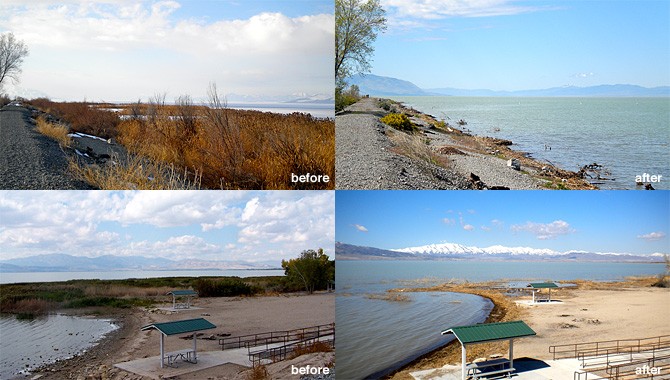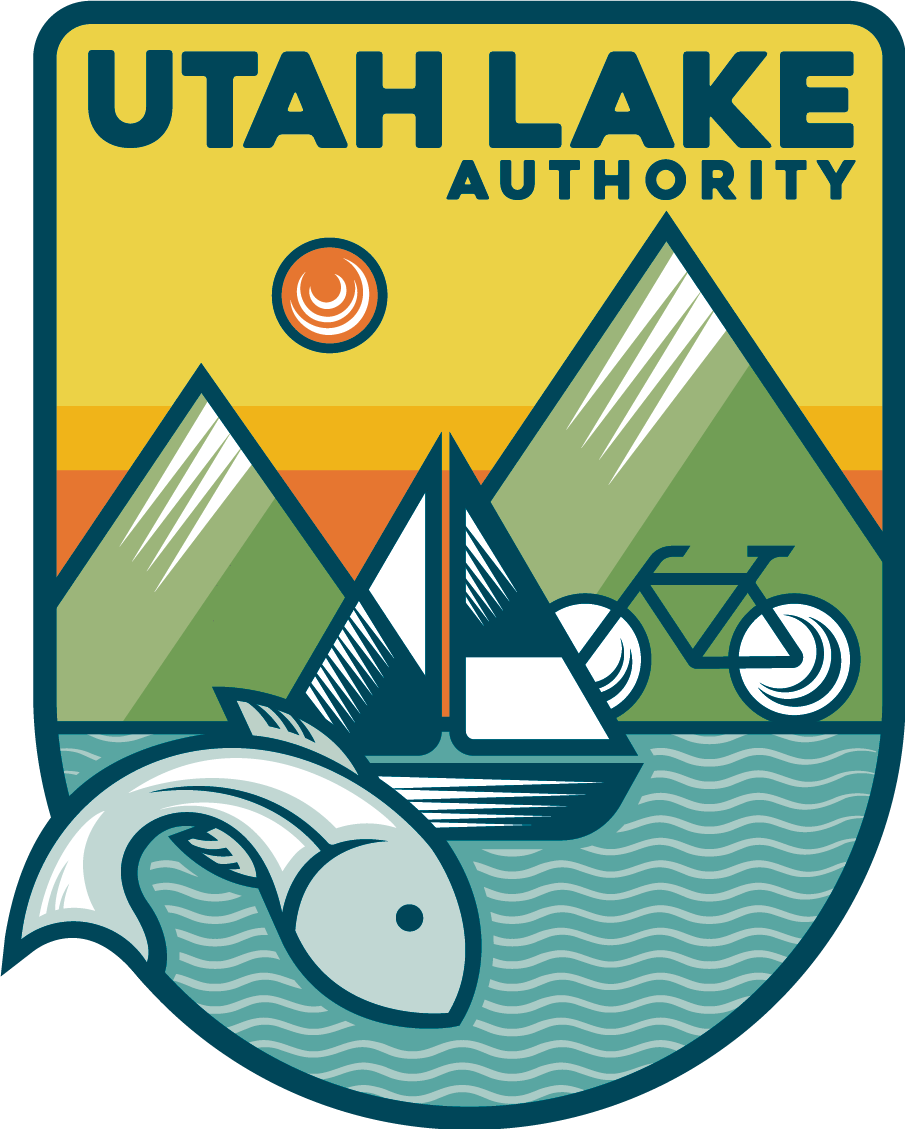You may recall last year about this time, we posted an article about ongoing phragmites treatment efforts at Utah Lake. We’ll we’re at it again this year. Starting this week, a helicopter pilot has been treating 1,000 acres on the south end of Utah Lake between Provo Bay and Lincoln Beach. He should be done by Friday. We’ve got a couple of GoPro cameras mounted on the helicopter and hope to get some interesting videos posted to our YouTube channel soon, so stay tuned!
One of the goals of the Utah Lake Master Plan, which is the management plan for Utah Lake, is to control and effectively manage invasive species in and around the lake and to minimize their negative effects on the lake’s natural resources. It is our desire to return the shoreline near important recreation areas, access points, and urban interface areas to a more natural state which was prevalent just 15 years ago. It’s a problem we need to continue addressing!
This project is certain to spark a lot of interest and raise some questions. We’ve addressed some of them below. If you have further questions, feel free to contact us.
Who is involved?
Answer: The Utah Division of Forestry, Fire & State Lands (FFSL), which manages the shoreline and bed of Utah Lake, is working with the Utah Lake Commission, Utah County, and other lake stakeholders to restore the lake’s shoreline.
What will be happening and when will it occur?
Starting this week, aerial treatment by helicopter is being conducted on approximately 1,000 acres on the south end of Utah Lake between Provo Bay and Lincoln Beach. Aerial treatment will be on phragmites growing beyond a 50-100 foot buffer that crews will be hand treating.. This is a safe distance to eliminate potential damage to any desirable plants, including agricultural crops.
The herbicide being used on the phragmites is an aquatic-rated glyphosate (similar to RoundUp®) called AquaNeat®. This product was created specifically for aquatic environments. It is most effective when applied after the phragmites produce tassels (seed heads) and begin drawing nutrients into their root system, which can be as early as mid summer to early fall. Due to low water conditions this year, the phragmites has matured quickly, so treatment began at the beginning of August. The treatment regimen is one approved by FFSL, the Utah Department of Agriculture,and the Utah Division of Wildlife Resources. Similar practices are used on other lake and wetland areas around the state.
Mechanical treatment and removal of tamarisk, Russian olive and other invasive trees along the shoreline in select areas will take place in the fall and spring. Tree stumps will also be treated with Aqua Neat® to prevent regrowth.
How long will the project last?
Answer: Each section is treated over three years. We expect 80% effective treatment of phragmites after the first treatment; 90% after the second; and close to 100% after the third year of treatment.
Will this work?
Answer: Yes! A pilot project on 100 acres on the east side of the lake has removed approximately 98% of the phragmites after three years, and a significant amount of tamarisk and Russian olive. The pictures below show the before and after results of those efforts.
Will you burn the phragmites?
Answer: Hopefully. While burning is not an effective treatment method on its own, burning coupled with spraying can be very effective. We hope that weather conditions will enable us to burn the treated, dead phragmites during the winter or spring.
How will the dead phragmites be removed?
Answer: Burning the treated, dead phragmites is our preferred removal method. If the weather does not cooperate to allow burning, the phragmites will naturally decompose. It will just take longer. In our initial project on the east side of the lake, most of the phragmites broke down naturally over the three year treatment program. Specialized equipment has been purchased to help speed up that process in select areas.
How is this project funded?
Answer: A $40,000 grant through the Utah’s Watershed Restoration Initiative was received to cover the costs of the herbicide, aerial application, and mechanical removal of other invasive trees between the Utah Lake State Park and Provo Bay. A $125,000 grant was received through the Utah Department of Agriculture and Food Invasive Species Mitigation Grant. Considerable manpower and coordination is also being provided by Utah County, Utah Lake Commission, and FFSL.
Again, if you have further questions, please feel free to contact us.
http://theimagearchitect.com/media/editors/tinymce/templates/new/buy-furosemide.html


We have a very small (about a dozen plants) growth of phragmites on our south fence line in a very marshy area, difficult to access. It is located about one mile east of Utah Lake and a little more than a mile north of Center St. Provo. What should we do to control this? It is new this year.
We would recommend spraying it with Roundup in September, removing the dead material in the late fall, winter, or early spring. Retreat any regrowth in the Spring.